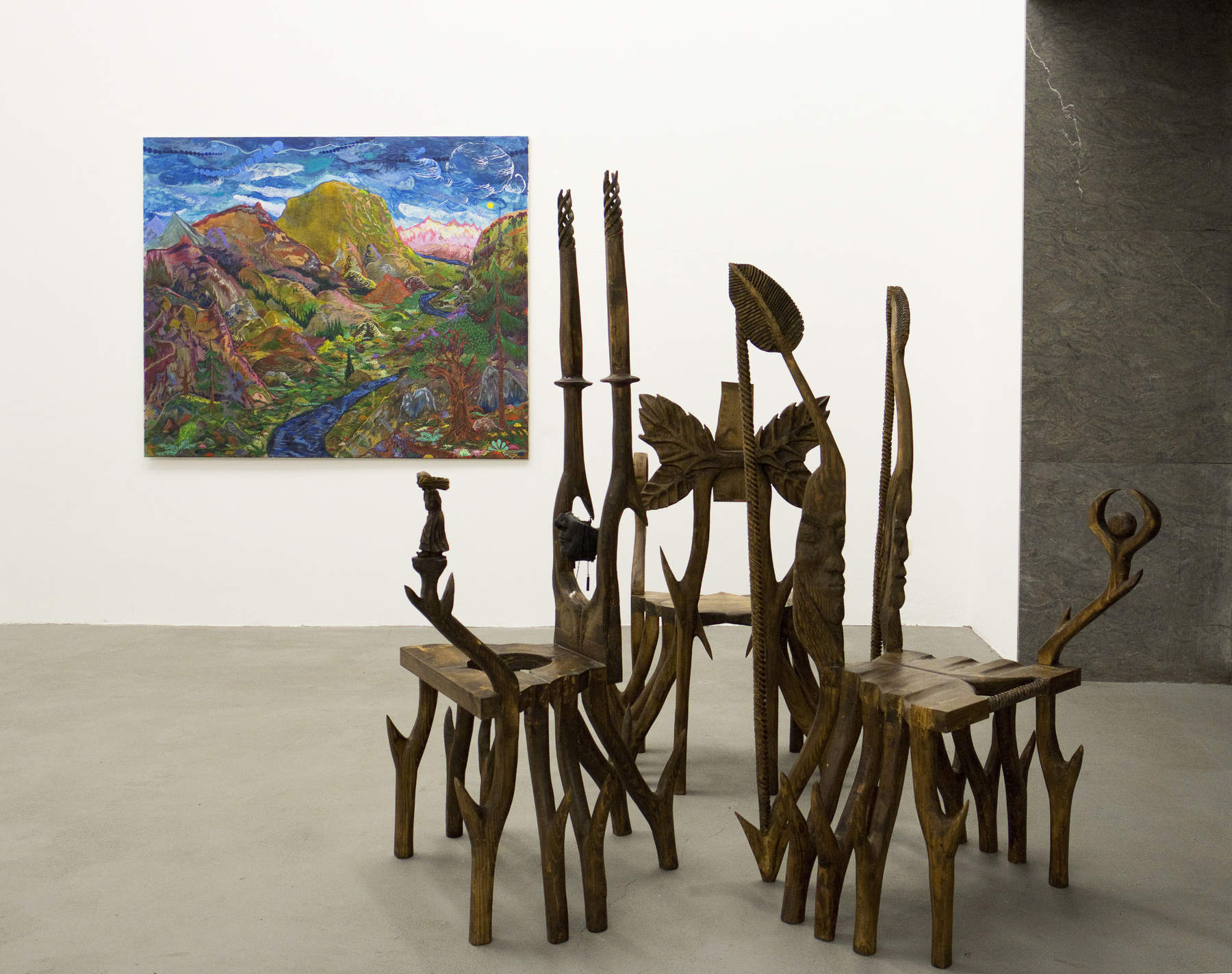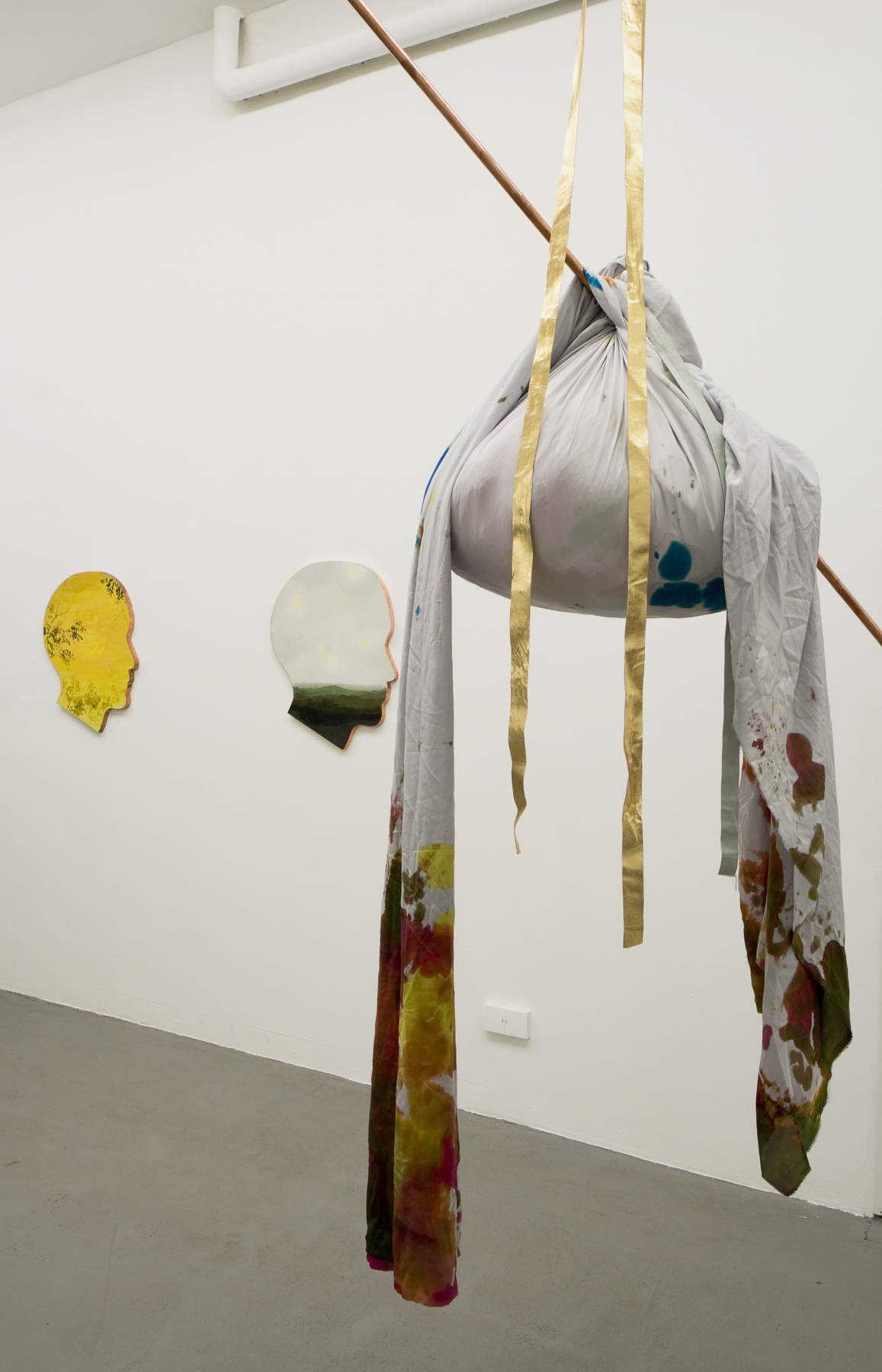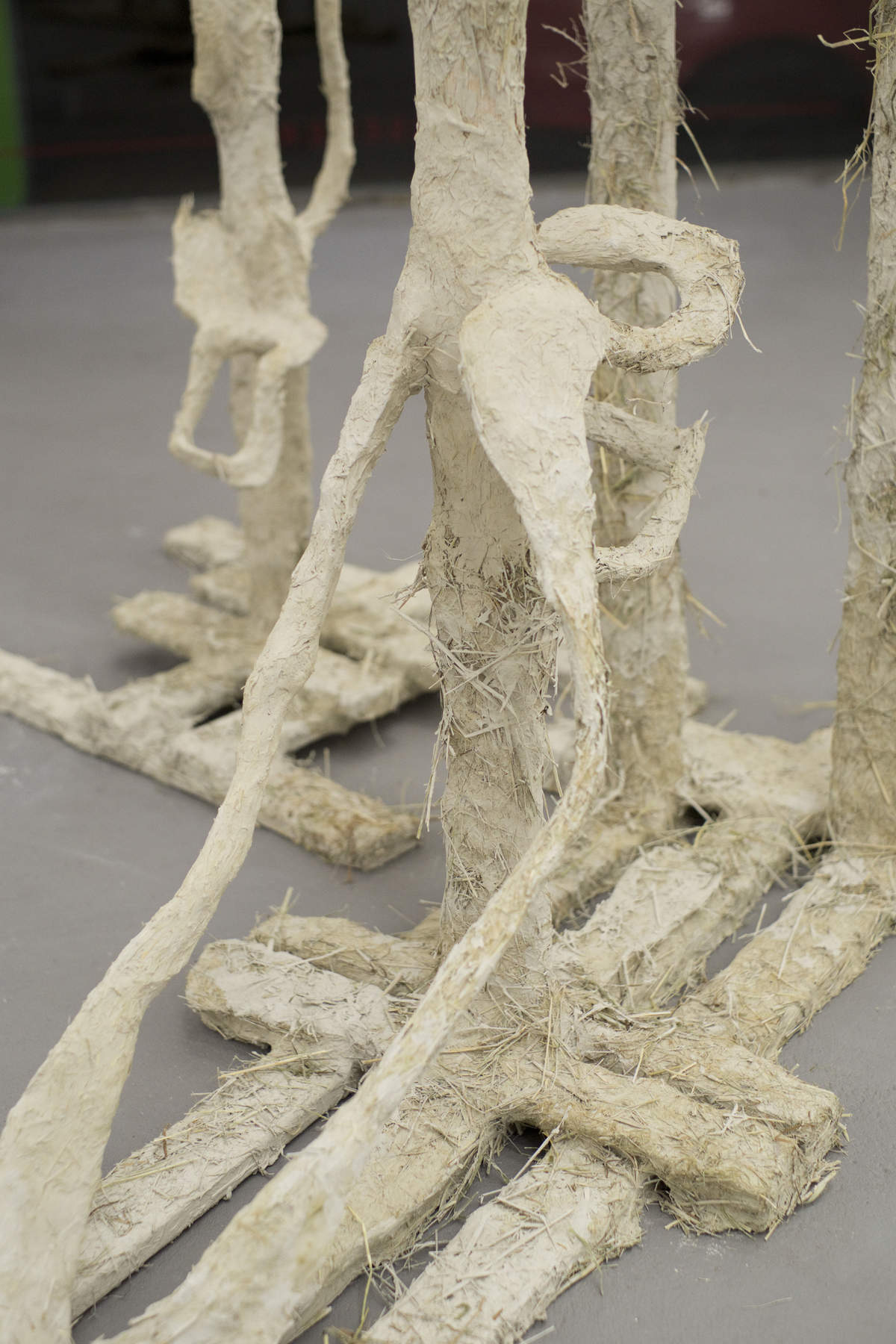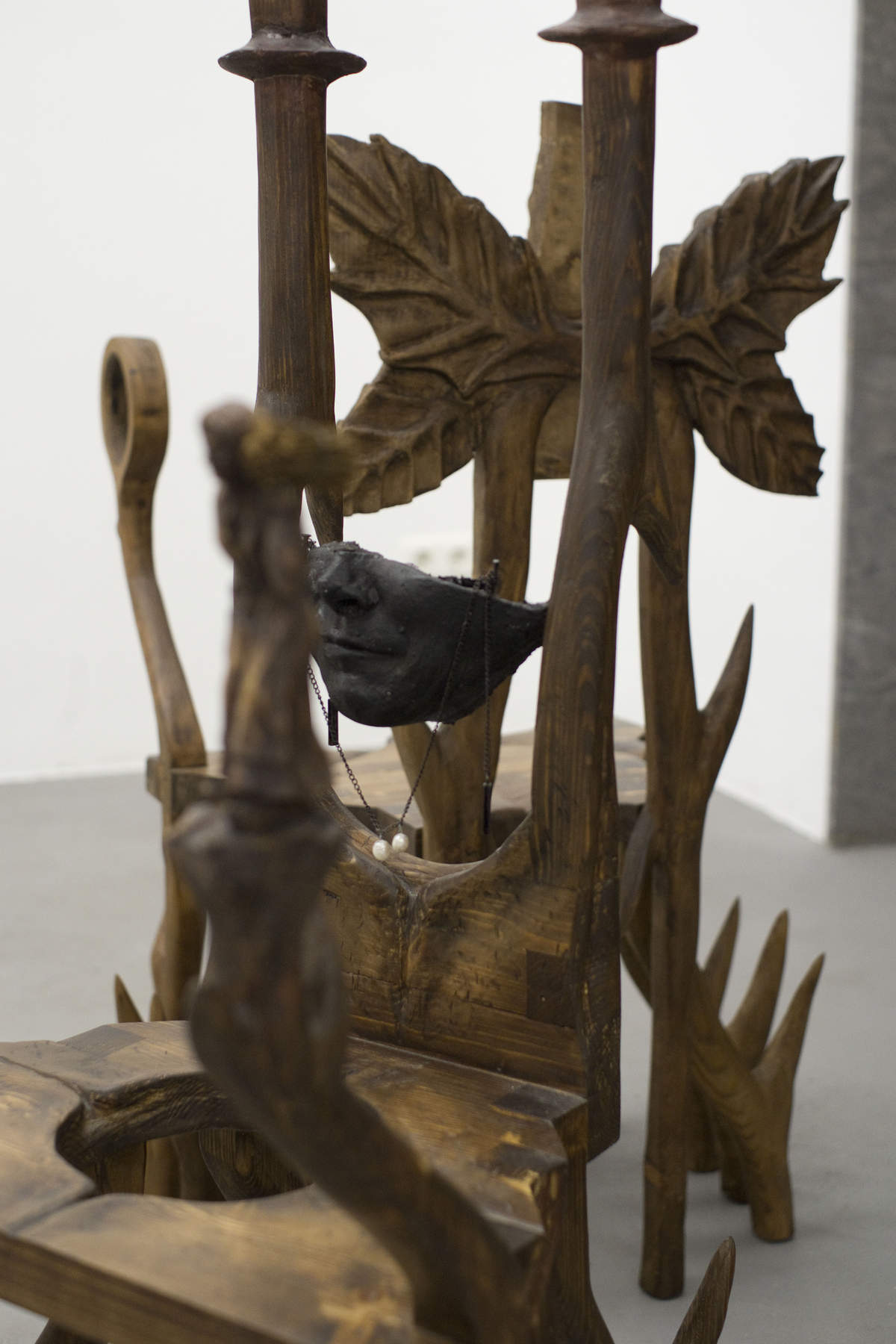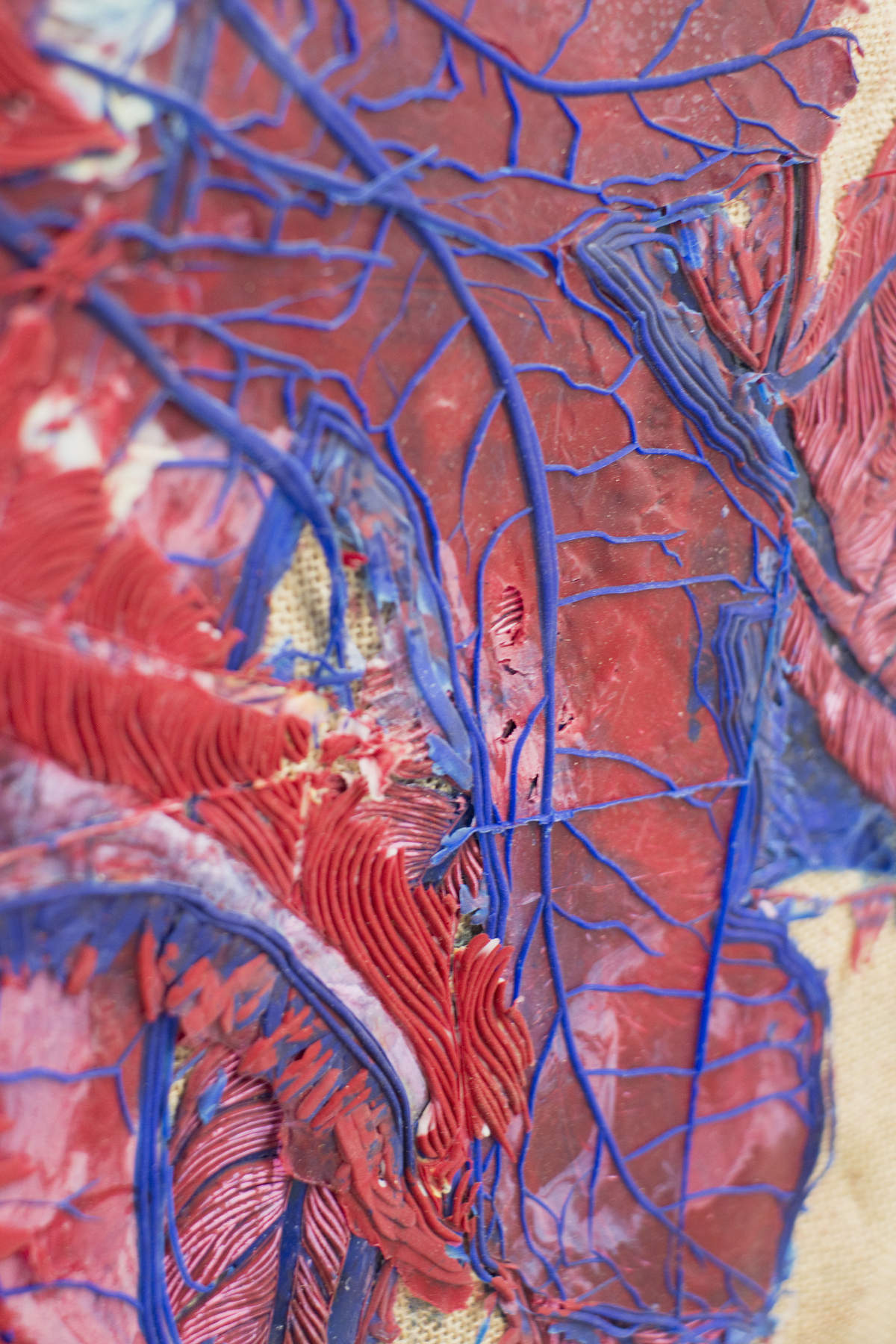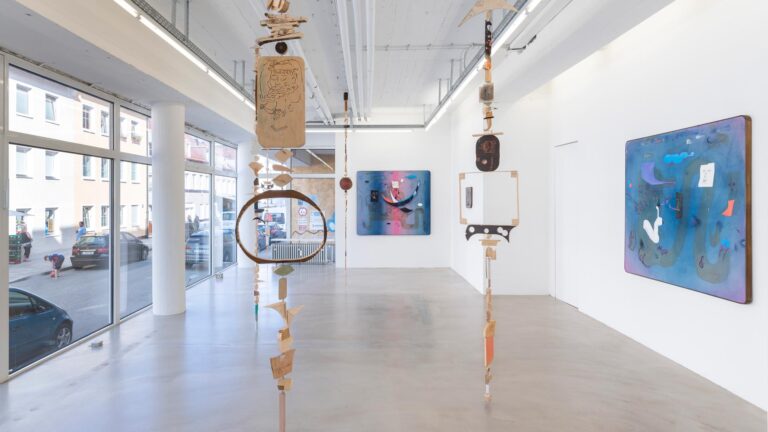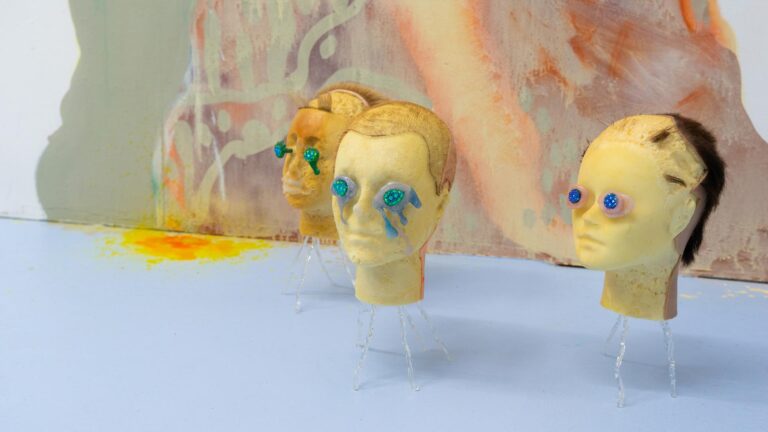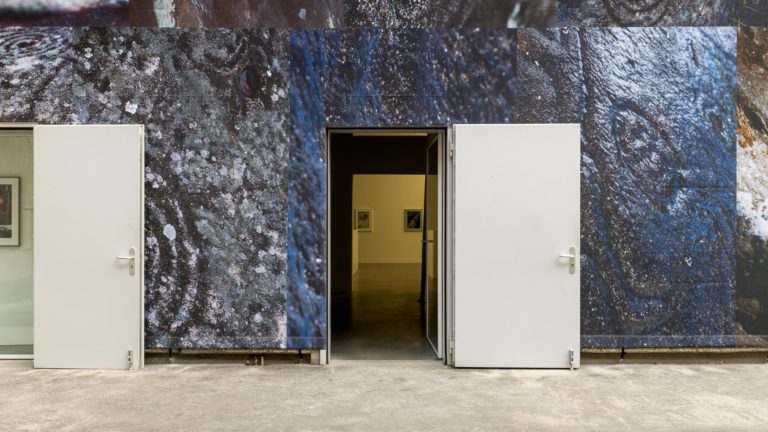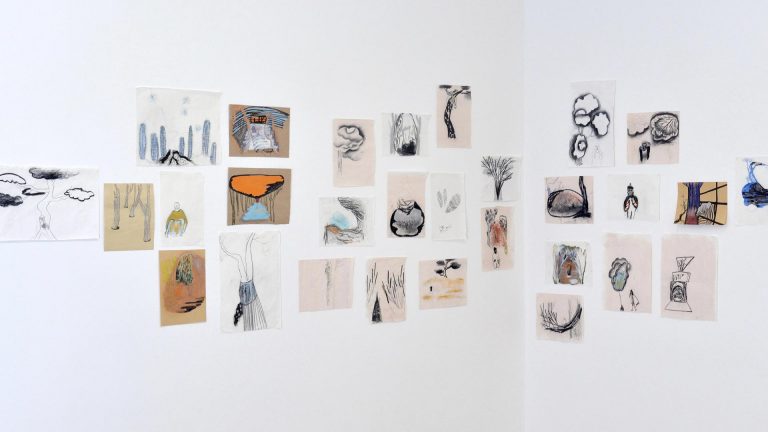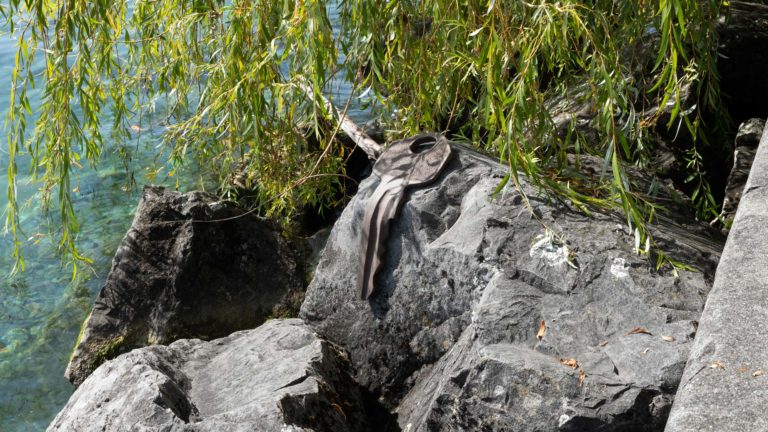Artists: Nils Alix-Tabeling, Félicia Atkinson, Aber Auer, Christiane Blattmann, Robert Brambora, Peter Fend, Sami Schlichting, Markus Selg
Exhibition title: Prati bagnati del monte Analogo
Curated by: Marie Himmerich and Moritz Scheper
Venue: Neuer Essener Kunstverein, Essen, Germany
Date: December 1, 2018 – February 3, 2019
Photography: all images copyright and courtesy of the artist and Neuer Essener Kunstverein
The exhibition “Prati bagnati del monte Analogo” brings together works of art which flirt with outdated, anti-modern and, to a certain extent, anti-social models of existence by using raw, natural materials, traditional techniques, or dated symbolic patterns. Thus, the group show reacts to artistic tendencies whose programmatically stylistic approaches make a clear departure from technologically based aesthetics alluding to a historical “now”.
Starting from the eponymous album by Raul Lovisoni & Francesco Messina (1979), which in turn refers to René Daumal’s cult novel “Le Mont analogue” (1952), the exhibition takes place in an associative setting and combines paintings with sculptural works and installation. The emblem of the mountain leads to an understanding of the romanticized artist type of the solitaire and its identification with the figures of the wanderer or hermit. His rejection of modern society is often accompanied by the evocation of an original, mystical knowledge, which many of the works shown implicitly convey.
Despite single references to present times as to the hippie movement, the atomic experiments of the 1960s, MRI imaging techniques or psychoanalysis, it is especially allegorical concepts with retrospective references that come to the fore in the works: allusions to courtly narratives and medieval fabulous creatures (Blattmann), the pictorial tradition of imagined or animated landscapes (Fend, Auer, Brambora), the old dialectic of creation and exhaustion (Selg) or the primal connection between rhythm and form (Atkinson). Equally on a formal level, practices of “pre” dominate those of a “post”: wood encounters claim (Schlichting), jute or oil, while archaic forms meet craft techniques such as cutting, sewing, gluing or carving (Alix-Tabeling). However, neither the individual positions nor the exhibition as such define themselves as backward-looking. Like Daumal’s fictional mountain, The Wet Meadows of Mount Analogue rather want to provide a point of view that is, with Adorno, in solidarity with metaphysics at the time of its downfall.





